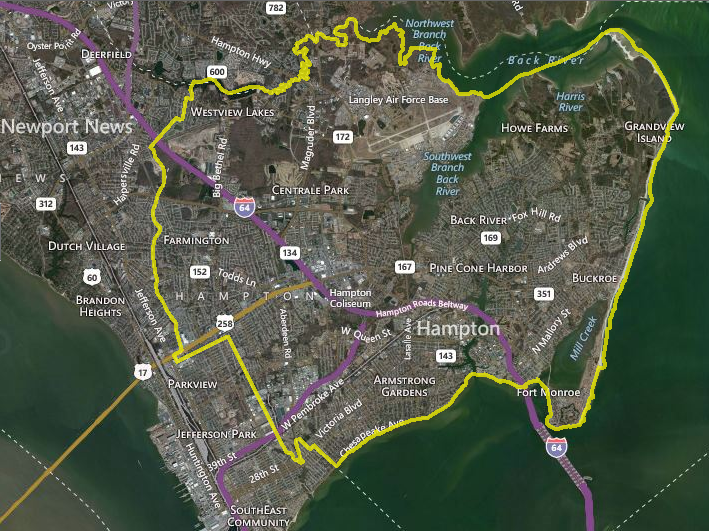
city boundaries - Hampton, Virginia
Source: City of Hampton, WebGIS Portal

city boundaries - Hampton, Virginia
Source: City of Hampton, WebGIS Portal
On April 30, 1607, English settlers stopped at the "Strawberry Banks" on the north bank at the mouth of the James River. They sailed upstream to Jamestown, but came back in 1609 to occupy the land where they envisioned strawberries growing. The English also named their 1623 settlement at the mouth of the Piscataqua River (in modern New Hampshire) "Strawbery Banke," presumably for the same reason.1
The colonists built Fort Algernourne in 1609 near Point Comfort, likely on the Strawberry Banks. Moving some starving settlers away from Jamestown reduced the demand on the fort's food supplies, and may have reduced transmission of density-dependent disease. The fort also provided an early warning system of Spanish, Dutch, and pirate ships until being abandoned in 1667 after Charles II made peace with the Netherlands leader, William of Orange.
Sir Thomas Dale had Fort Charles and Fort Henry built near the mouth of the Hampton River in 1610.
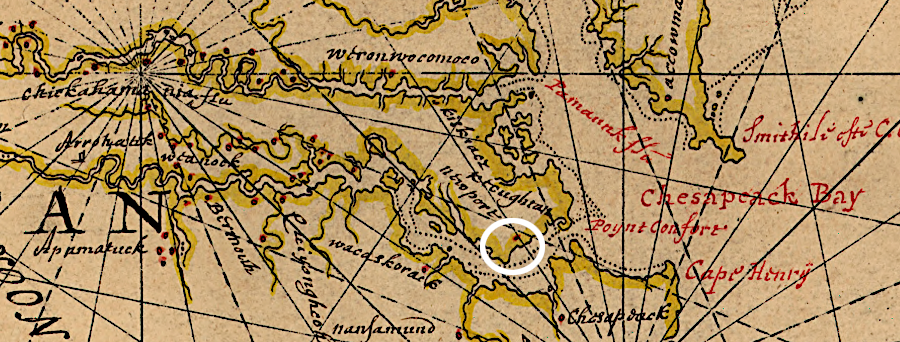
the forts at the mouth of the James River were isolated from Jamestown and the settlements upstream at Henricus
Source: Library of Congress, Map of Atlantic Coast of North America from the Chesapeake Bay to Florida (by Joan Vinckeboons, 1639?)
Fort George was built near the same site in 1727, and was washed away by a storm on October 19, 1749. A hurricane storm surge raised the level of Chesapeake Bay 15 feet, created Willoughby Spit at Norfolk, and washed away the fort's walls. The location of modern-day Hampton was buried under four feet of water. Today, I-64 has been reconfigured so it can be converted into a hurricane escape route. If necessary, all eastbound traffic can be stopped and those lanes used for westbound traffic inland to safety west of Williamsburg.2
The first gunshots fired between British and Virginia forces occurred at Hampton. On October 26–27, 1775, the British sought to regain a supply tender which had run aground during a storm and been seized by the colonists. After two days of fighting, the boat remained in the hands of the colonists. At least three of the British had been killed and several more wounded. The Virginia forces reported no sacualties.3
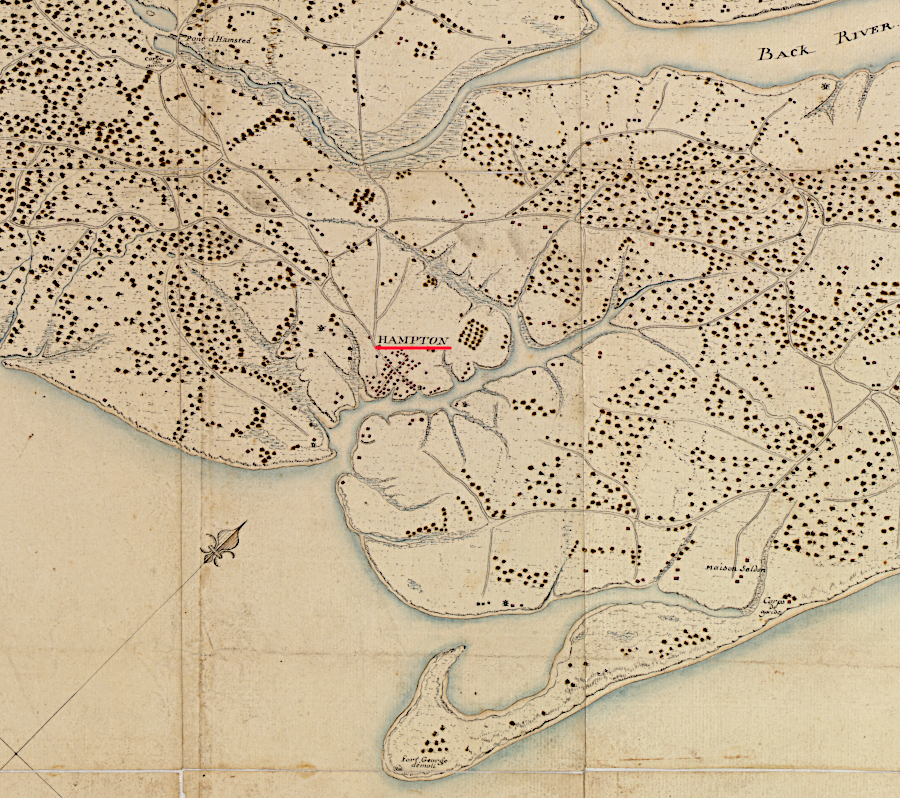
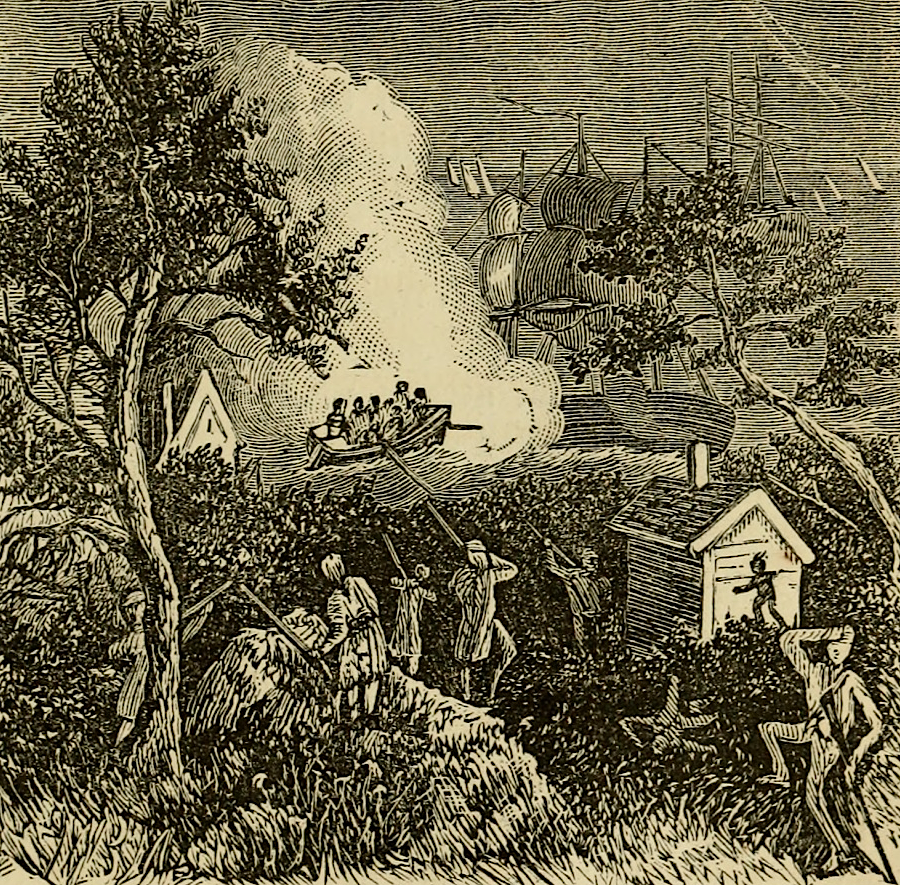
Hampton was the first place in Virginia attacked by the British
Source: Library of Congress, Carte des environs d'Hampton (1781); Mary Tucker Magill, History of Virginia, for the use of schools, 1873 (p.179)
Hampton was seized by British forces in the War of 1812, after the Americans on Craney Island successfully blocked the attempt to capture the Gosport Navy Yard on the Elizabeth River. The British behavior at Hampton generated American complaints about theft and rape. The traditional American interpretation before the Civil War was that the British officers failed to exert appropriate discipline over poor-quality troops, and that the American slaves in Hampton were captured and forced to move to British-controlled islands rather than escaped to freedom:4
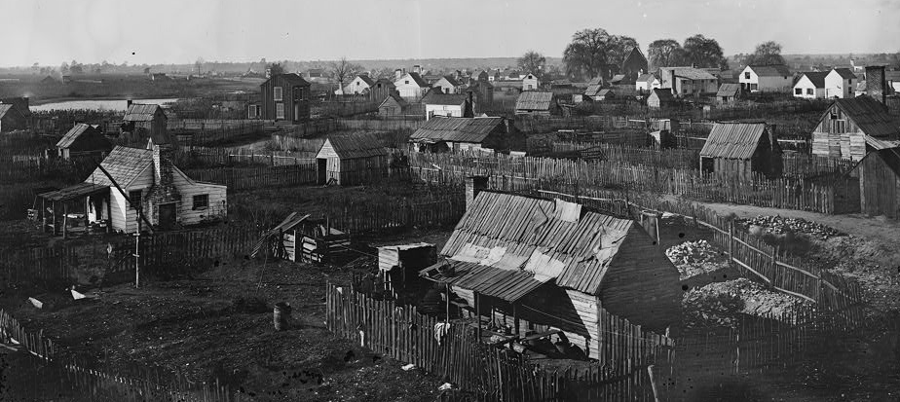
Hampton in 1864
Source: Library of Congress, Hampton, Va. View of the town

NASA conducts research on airplane technology and safety, including full-scale crash testing, at the Langley Research Center in Hampton
Source: National Aeronautics and Space Administration (NASA), Retired Aviator on Hand to Witness Drop Test of His Old Airplane
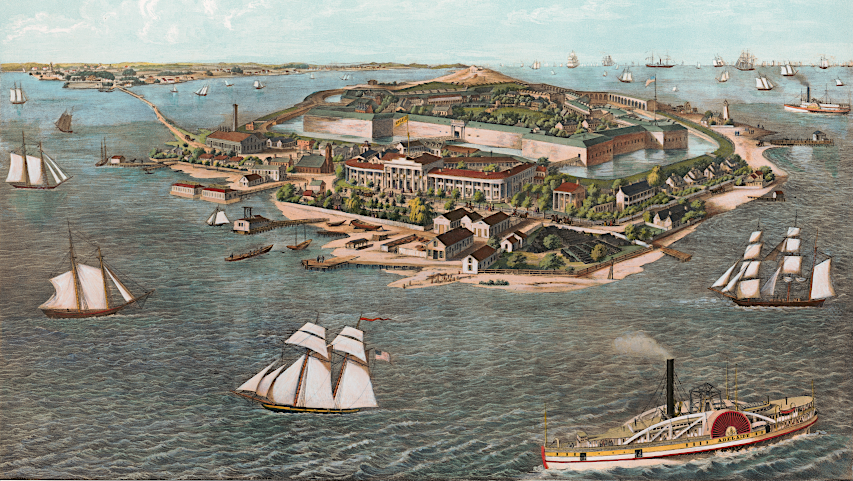
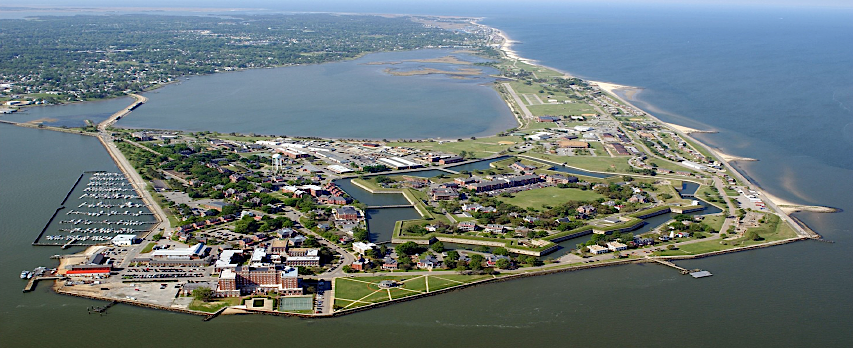
Fort Monroe is within the city limits of Hampton
Source: Library of Congress, Fortress Monroe, Old Point Comfort, and Hygeia Hotel, Va. (1853); US Army, Fort Monroe, VA Conveyance Progress Report
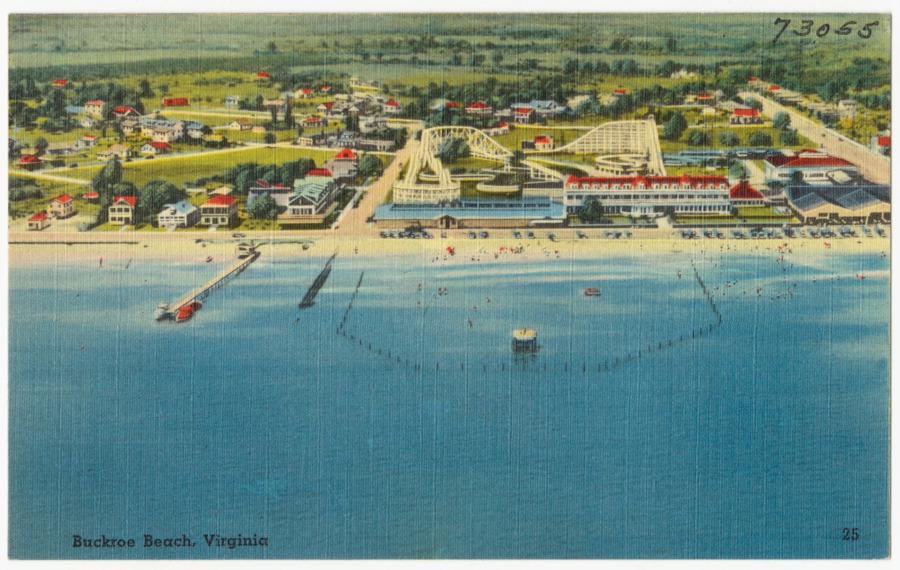
a 1930-1945 tourism postcard highlighted Buckroe Beach in Hampton
Source: Boston Public Library, Tichnor Brothers Postcard Collection, Buckroe Beach, Virginia
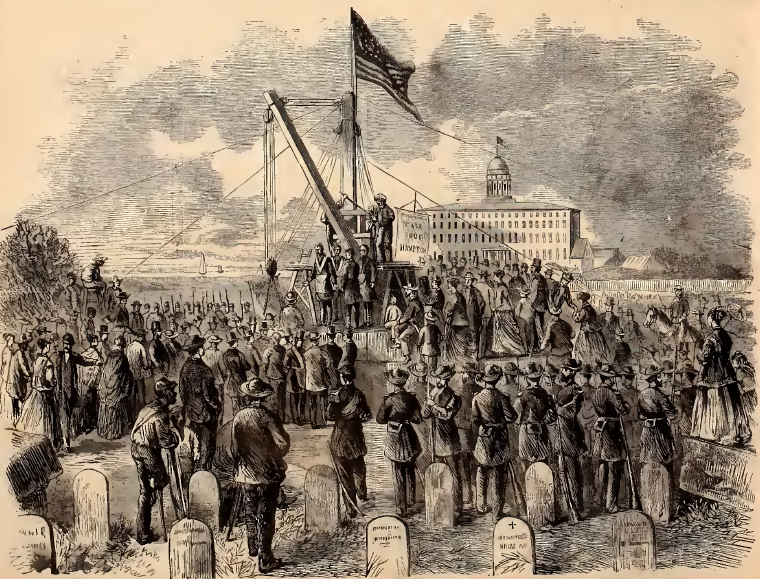
laying the cornerstone of the Soldier's Monument at Hampton, Virginia (October 8, 1867)
Source: Harper's Weekly (October 26, 1867, p.676)
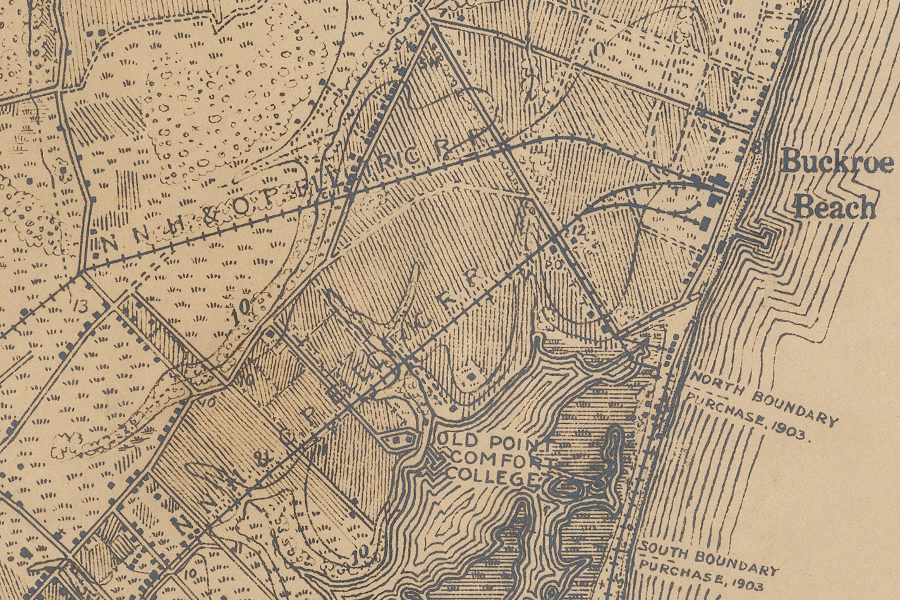
Buckroe Beach was a popular resort accessed by rail, before air conditioning became common
Source: US Geological Survey, Vicinity of Fort Monroe, peninsula between York and James Rivers, Virginia (1910-1911, Sheet 1)
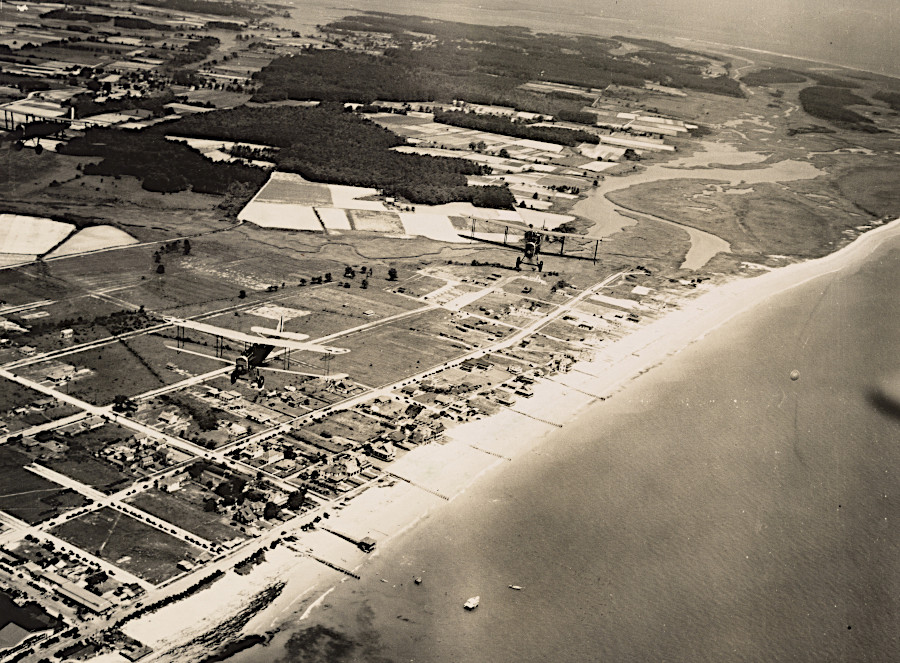
Buckroe Beach in 1920
Source: National Archives, Virginia - Blue Ridge Mountains through Cape Charles
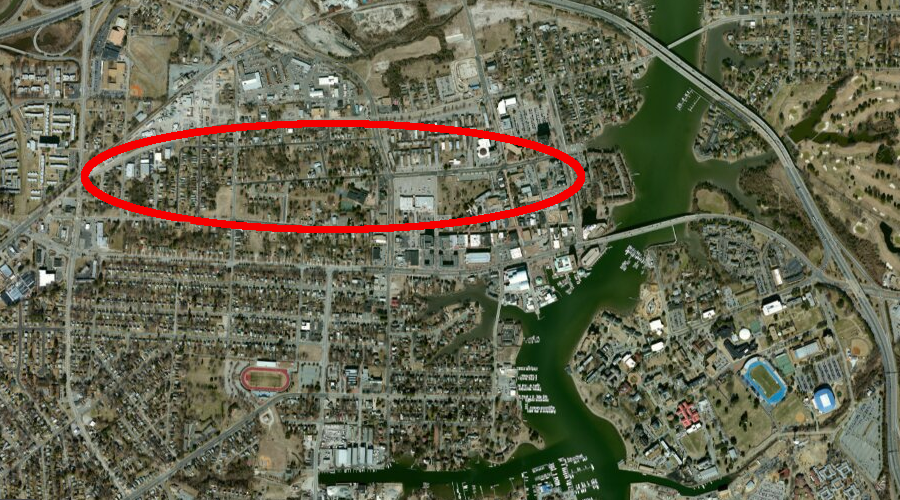
a major contraband camp was established in Hampton during the Civil War
Source: ESRI, ArcGIS Online